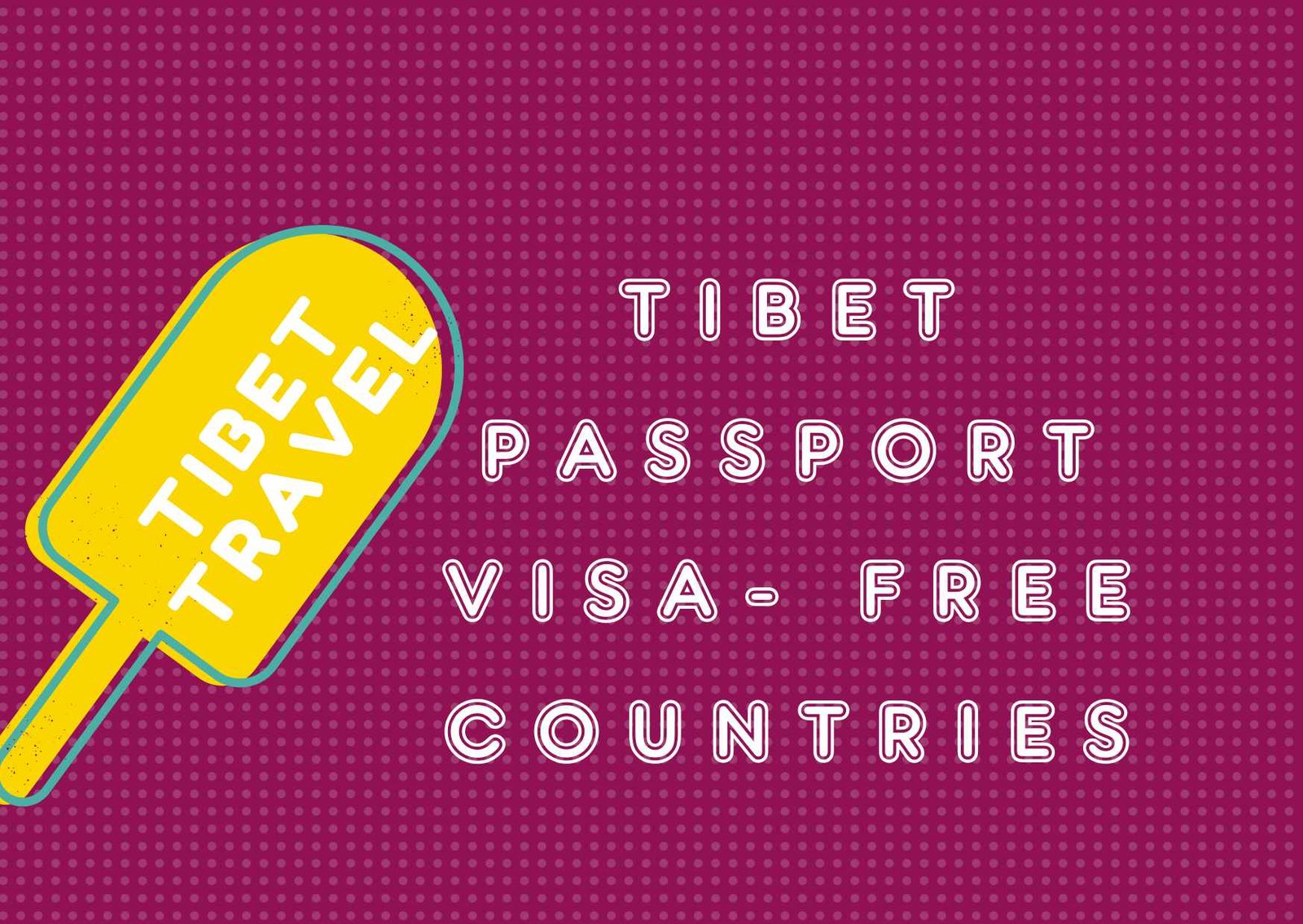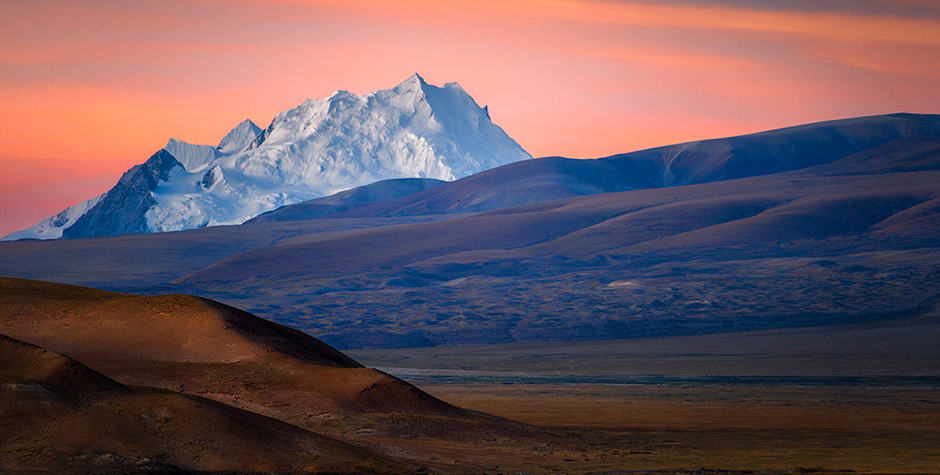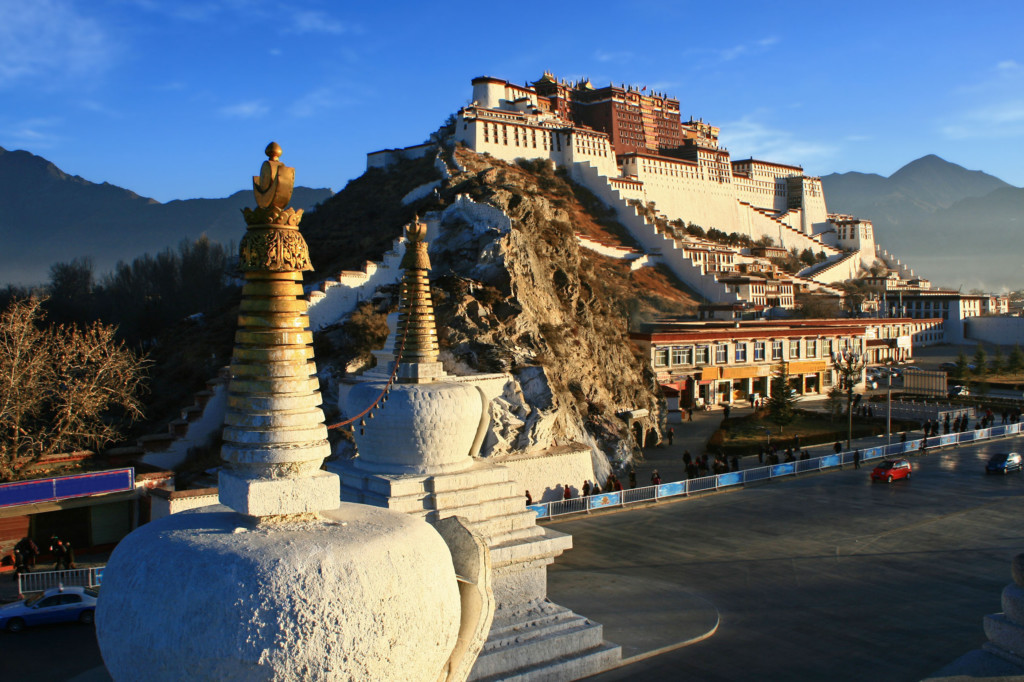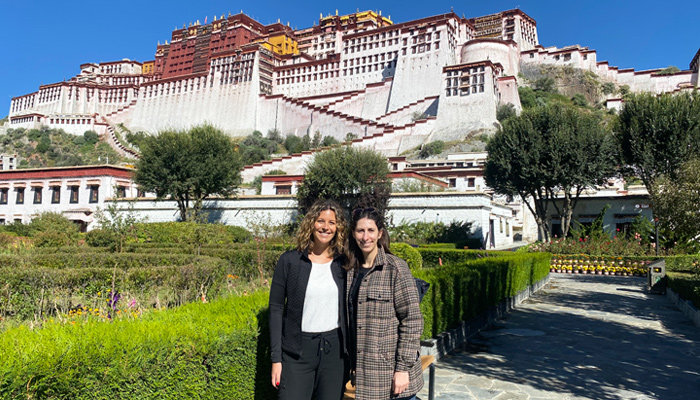Tibet Travel: A Guide for Canadians

Introduction to Tibet Travel for Canadians
Embark on a journey like no other as a Canadian traveller exploring the mystical and enchanting lands of Tibet. Steeped in rich culture and awe-inspiring landscapes, Tibet offers a unique experience that will leave a lasting impact on your soul. From the bustling streets of Lhasa to the serene beauty of Everest Base Camp, this sacred land beckons adventurers seeking a deeper understanding of Tibetan traditions and way of life.
Visa and Entry Requirements
- Visa Application Process: Canadian citizens are required to obtain a Tibet Travel Permit through a registered travel agency in China. The agency will assist in processing the necessary permits for travelling within Tibet.
- Entry Restrictions and Permits: Certain areas in Tibet may require additional permits for access, especially for remote regions or border areas. It's essential to ensure that all permits are in order before embarking on your journey.
Best Time to Visit Tibet
- Weather and Climate: The best time to visit Tibet is during the spring and autumn seasons when the weather is mild and pleasant. Summers can be warm, while winters bring cold temperatures and snowfall.
- Peak Tourist Seasons: The peak tourist seasons in Tibet are from April to October when the weather is most favorable for travel and outdoor activities.
Stay tuned for insights on must-visit destinations in Tibet and essential cultural etiquette tips for your journey ahead.

Visa and Entry Requirements
Visa Application Process
Embarking on a journey to Tibet as a Canadian traveller requires careful consideration of the visa application process. To begin your adventure in this mystical land, you must first obtain a Tibet Travel Permit through a registered travel agency in China. These agencies specialize in facilitating the necessary permits for tourists to explore Tibet's wonders. The Tibet Travel Permit is a crucial document that allows entry into the region, so it is essential to work with a reputable agency to ensure a smooth application process.
- Prepare Required Documents: When applying for your Tibet Travel Permit, you will need to provide a copy of your passport, Chinese visa, and travel itinerary.
- Consult with a Registered Agency: To streamline the visa application process, it is advisable to seek assistance from a registered travel agency that specializes in Tibet permits.
- Plan Ahead: It is recommended to begin the visa application process well in advance of your planned travel dates to allow for any unforeseen delays or issues that may arise.
Entry Restrictions and Permits
In addition to the Tibet Travel Permit, certain areas within Tibet may have entry restrictions and require additional permits for access. Remote regions, border areas, and sensitive locations may have specific permitting requirements to maintain security and preserve the local culture and environment.
- Additional Permits: Depending on your travel itinerary, you may need additional permits to visit certain regions or attractions in Tibet.
- Ensure Compliance: It is important to adhere to all entry restrictions and permit requirements to avoid any complications during your journey.
- Consult with Your Travel Agency: Your designated travel agency can assist in obtaining the necessary permits and provide guidance on any specific entry restrictions that may apply to your travel plans.
As you prepare for your adventure in Tibet, understanding the visa application process and entry requirements is essential to a successful and memorable journey.

Best Time to Visit Tibet
Discovering the optimal time to explore Tibet is crucial for making the most of your journey as a Canadian traveller. Experience the true essence of this captivating region by timing your visit during periods that offer favorable weather conditions and vibrant cultural experiences.
Weather and Climate
Tibet's climate is diverse and can vary significantly depending on the season and region. Understanding the weather patterns will help you plan your visit effectively.
- Spring (April to June): Spring brings milder temperatures and blooming landscapes, making it an ideal time to witness Tibetan flora in full bloom and enjoy pleasant weather for outdoor activities.
- Summer (July to September): Summer in Tibet can be warm, with clear skies offering stunning mountain views. However, this season can also experience occasional rainfall, so be prepared for changing weather conditions.
- Autumn (October to November): Autumn is considered one of the best times to visit Tibet, with clear skies, cool temperatures, and vibrant fall foliage creating an enchanting backdrop for exploration.
- Winter (December to March): Winter in Tibet can be cold, with snowfall in higher elevations. While some areas may be inaccessible during this season, winter offers a unique opportunity to experience Tibetan festivals and cultural traditions.
Peak Tourist Seasons
Understanding the peak tourist seasons in Tibet is essential for planning your trip and managing expectations regarding crowd levels and the availability of accommodations and services.
- High Season (April to October): The period from April to October is considered the high tourist season in Tibet, characterized by pleasant weather conditions and increased visitor numbers. It's advisable to book accommodations and tours in advance during this peak period.
- Low Season (November to March): The low season in Tibet, from November to March, sees fewer tourists due to colder temperatures and the possibility of snow. However, this quieter period can offer a more serene and intimate exploration of Tibet's unique landscapes and cultural heritage.
By considering the weather and peak tourist seasons, you can make informed decisions for an unforgettable journey through the majestic landscapes and ancient cultural sites of Tibet.

Must-Visit Destinations in Tibet
Embark on a journey through the heart of Tibet to discover two of its most iconic and captivating destinations. From the cultural riches of Lhasa, the capital city, to the awe-inspiring heights of Everest Base Camp, these sites offer a glimpse into the diverse and enchanting landscapes of the region.
Lhasa: The Capital City
Lhasa, the spiritual and administrative capital of Tibet, beckons visitors with its ancient monasteries, bustling markets, and rich cultural heritage. Exploring Lhasa allows you to immerse yourself in the vibrant Tibetan way of life and witness the harmonious blend of tradition and modernity.
- Potala Palace: A UNESCO World Heritage Site and iconic symbol of Tibetan Buddhism, the Potala Palace enchants visitors with its imposing structure and lavish interiors.
- Jokhang Temple: This revered Tibetan Buddhist temple is a spiritual hub in Lhasa, drawing pilgrims from far and wide to pay their respects and partake in religious rituals.
- Barkhor Street: Stroll through the bustling Barkhor Street to experience the vibrant local culture, shop for traditional handicrafts, and sample authentic Tibetan cuisine.
Everest Base Camp: A Thrilling Adventure
For the ultimate adventure in Tibet, journey to Everest Base Camp and witness the awe-inspiring majesty of the world's highest peak. Situated at an elevation of over 5,000 meters, this legendary destination offers a thrilling experience amidst breathtaking mountain vistas.
- Scenic Views: Trek to Everest Base Camp for unparalleled views of Mount Everest and the surrounding Himalayan peaks, a sight that will leave you in awe of nature's grandeur.
- Cultural Encounters: Along the trek to Everest Base Camp, interact with local Sherpa communities and gain insight into their way of life, traditions, and deep connection to the mountains.
- Personal Achievement: Standing at the foot of Mount Everest is a remarkable feat and a testament to your spirit of adventure and exploration.
Embark on a transformative journey through Lhasa and Everest Base Camp, where ancient traditions, spiritual wonders, and natural beauty converge to create unforgettable memories in the mystical land of Tibet.

Cultural Etiquette and Respect
Immerse yourself in the rich and vibrant culture of Tibet by embracing the customs, traditions, and values that define this mystical land. As a Canadian traveller, respecting local practices and showing cultural sensitivity will deepen your connection to the community and enhance your overall experience.
Interacting with Locals
One of the most rewarding aspects of travelling in Tibet is the opportunity to engage with the warm and hospitable Tibetan people. By approaching interactions with respect and open-mindedness, you can forge meaningful connections and gain insights into the local way of life.
- Greetings: When meeting locals, greet them with a smile and a slight bow as a sign of respect. Learning a few basic Tibetan phrases such as "Tashi Delek" (hello) and "Kadrinche" (thank you) can go a long way in bridging cultural gaps.
- Avoid Taboo Topics: Be mindful of sensitive subjects such as politics or religion in conversations with locals to maintain harmony and avoid unintentionally causing offense.
- Gift Giving: Presenting small gifts or tokens of appreciation to hosts or new acquaintances is a common practice in Tibetan culture and is seen as a gesture of goodwill.
Respecting Religious Sites and Traditions
Tibet's spiritual heritage is deeply intertwined with its cultural identity, making it essential to show reverence and respect when visiting religious sites and participating in traditional rituals.
- Dress Code: When visiting temples or monasteries, dress modestly and remove hats and sunglasses as a sign of respect. Refrain from wearing revealing clothing or clothing with offensive symbols.
- Photography: Seek permission before taking photographs inside religious sites, and always be mindful of worshippers and sacred objects. Avoid using flash photography that may disturb the peaceful atmosphere.
- Participation: If invited to participate in religious ceremonies or rituals, observe and follow the lead of locals to show respect for their traditions and beliefs.
By embracing cultural etiquette and showing respect for local customs and traditions, you can forge meaningful connections, gain a deeper understanding of Tibetan culture, and create lasting memories of your time in this remarkable land.

Health and Safety Tips
Prioritizing your well-being and safety is essential when embarking on a journey to Tibet. As a Canadian traveller exploring the high-altitude landscapes and remote regions of Tibet, taking proactive measures to safeguard your health and ensure access to medical care can contribute to a smooth and enjoyable travel experience.
Altitude Sickness Prevention
The high altitude of Tibet presents a unique health challenge that can affect travellers, particularly those not acclimated to the elevation. Understanding how to prevent and manage altitude sickness is crucial for your health and comfort during your visit.
- Acclimatization: Gradually ascend to higher altitudes to allow your body time to adjust. Spend a few days in Lhasa or lower elevation areas before reaching higher altitudes like Everest Base Camp.
- Hydration: Stay well-hydrated by drinking plenty of water and avoiding alcohol and caffeine, which can contribute to dehydration at high altitudes.
- Medication: Consider carrying medications for altitude sickness prevention, such as acetazolamide, and consult with a healthcare professional before your trip.
Travel Insurance and Medical Facilities
Obtaining travel insurance and familiarizing yourself with the available medical facilities in Tibet are essential precautions to ensure your health and safety while travelling in this remote region.
- Travel Insurance: Purchase comprehensive travel insurance that includes coverage for medical emergencies, evacuation services, and trip cancellations. Verify that your policy specifically covers high-altitude activities and regions.
- Medical Facilities: Research the medical facilities available in Tibet, particularly in major cities like Lhasa, and identify hospitals or clinics that can provide adequate care in case of illness or injury.
- Emergency Contacts: Keep a list of emergency contacts, including your travel agency, embassy or consulate, and local emergency services, readily accessible in case of unforeseen situations.
By proactively addressing health and safety considerations, you can mitigate risks and better enjoy the wonders of Tibet with peace of mind. Stay informed, prepared, and attentive to your well-being throughout your journey.
Transportation and Accommodation
Navigating the vast and diverse landscapes of Tibet as a Canadian traveler requires thoughtful planning when it comes to transportation and accommodation. From exploring ancient monasteries to trekking through rugged terrains, understanding the available transportation options and accommodation choices will enhance your overall travel experience.
Getting Around Tibet
Travelling around Tibet offers a mix of transportation modes, each providing a unique perspective on the region's landscapes and cultural sites. Whether you prefer the convenience of modern vehicles or the traditional charm of Tibetan transportation, there are options to suit every traveller's preferences.
- Private Vehicles: Hiring a private car or joining a guided tour with a designated vehicle is a popular and convenient way to explore Tibet's attractions at your own pace.
- Public Transport: Utilize public buses or trains for cost-effective travel between cities and regions, offering a chance to interact with local commuters and experience everyday life in Tibet.
- Taxis and Rickshaws: In urban areas like Lhasa, taxis and rickshaws provide a convenient mode of transportation for short distances and sightseeing within the city.
Accommodation Options
Selecting the right accommodation in Tibet plays a vital role in ensuring a comfortable and enjoyable stay during your travels. From luxury hotels to traditional guesthouses, there are a variety of options catering to different preferences and budgets.
- Hotels and Resorts: Choose from a range of hotels and resorts in major cities like Lhasa and Shigatse, offering modern amenities, comfortable rooms, and stunning views of the surrounding landscapes.
- Guesthouses and Homestays: Experience authentic Tibetan hospitality by staying in guesthouses or homestays run by local families, providing a glimpse into traditional Tibetan life and culture.
- Camping and Trekking Lodges: For outdoor enthusiasts and adventurers, camping or staying in trekking lodges near popular trekking routes like Everest Base Camp offers a unique wilderness experience.
By selecting the right transportation modes and accommodation options that align with your travel preferences, you can create a memorable and seamless journey through the captivating landscapes and cultural treasures of Tibet.
